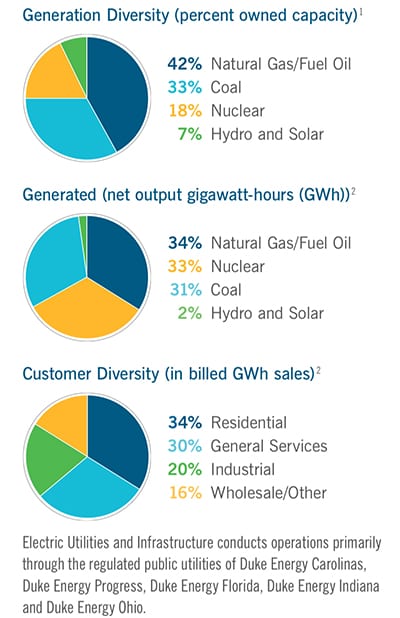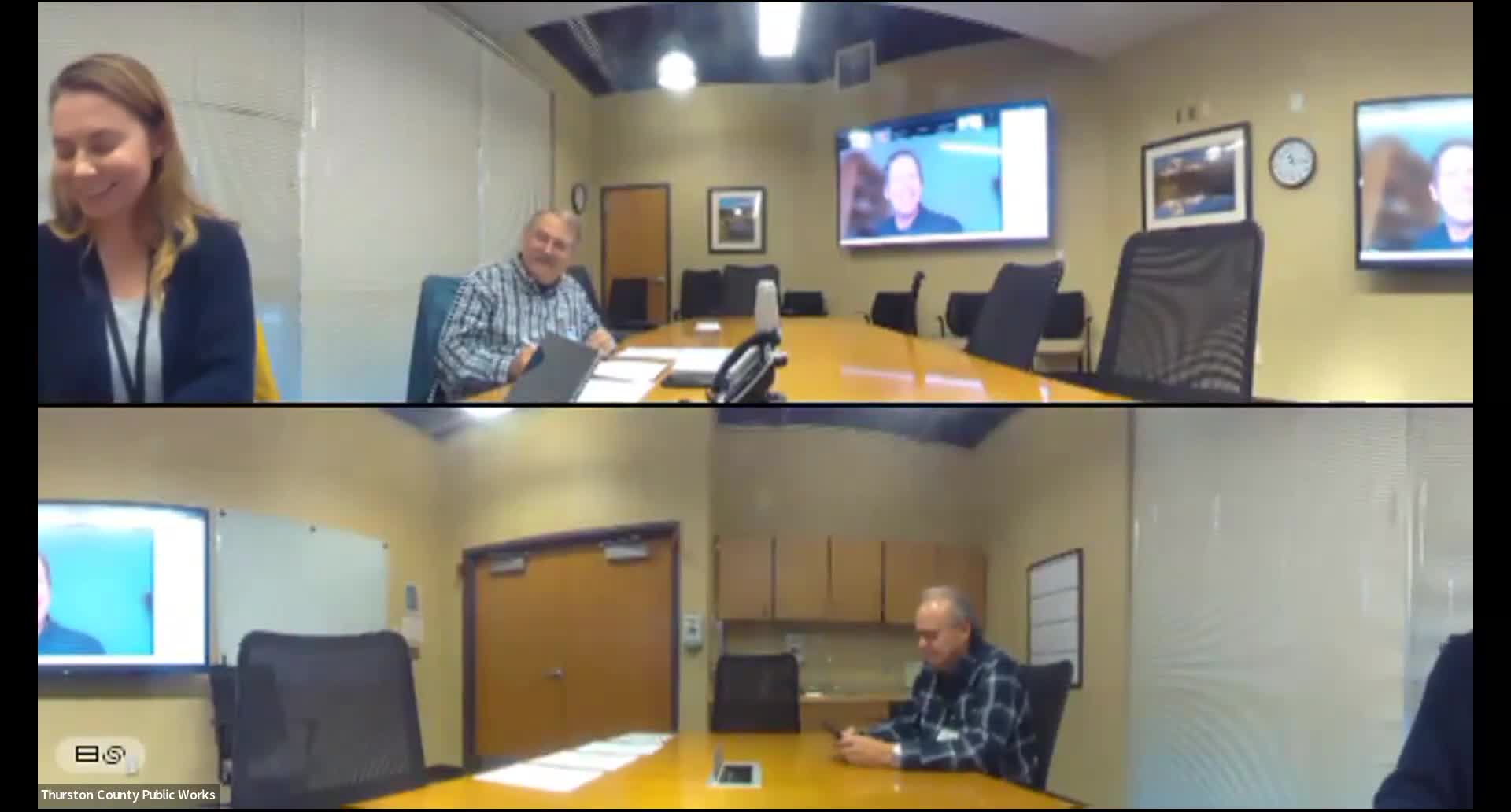Duke Energy Florida generates clean energy, customer savings with completion of Madison County solar site – Duke Energy | News Center

Report on Duke Energy Florida’s Renewable Energy Initiatives and Alignment with Sustainable Development Goals
Project Completion: Sundance Renewable Energy Center
Duke Energy Florida has announced the operational completion of the Sundance Renewable Energy Center in Madison County. This facility contributes 74.9 megawatts (MW) of clean energy to the state’s electric grid. The project is a key component in advancing United Nations Sustainable Development Goal 7 (SDG 7) by increasing the share of renewable energy in the national energy mix. Furthermore, by generating significant long-term fuel savings, the project supports the target of ensuring access to affordable and clean energy for the company’s 2 million customers.
Strategic Expansion for Sustainable Infrastructure
The Sundance facility is the first of four new solar sites Duke Energy Florida is developing, scheduled for completion by the end of 2026. This strategic expansion aligns with SDG 9 (Industry, Innovation, and Infrastructure) by building resilient and sustainable energy infrastructure.
- Total Capacity: The four sites in Madison, Sumter, Hernando, and Jefferson counties are projected to generate nearly 300 MW of clean energy.
- Economic Impact: The projects are expected to yield approximately one billion dollars in fuel savings over their operational lifetimes, contributing to energy affordability (SDG 7).
- Climate Action: This large-scale investment in solar power is a direct measure supporting SDG 13 (Climate Action) by reducing dependence on fossil fuels and mitigating greenhouse gas emissions.
Contribution to Sustainable Development Goals (SDGs)
Duke Energy Florida’s solar energy expansion makes significant contributions to several key SDGs:
- SDG 7: Affordable and Clean Energy: The company is substantially increasing the proportion of renewable energy in Florida’s energy infrastructure. The current portfolio of over 25 solar sites generates approximately 1,500 MW, with plans to add another 900 MW between 2025 and 2027. This ensures wider access to modern and sustainable energy.
- SDG 13: Climate Action: By projecting a total utility-scale solar capacity of over 6,100 MW by the end of 2033, the company is taking concrete action to combat climate change and its impacts through a transition to low-carbon energy sources.
- SDG 11: Sustainable Cities and Communities: The development of a diversified and cleaner energy fleet enhances the sustainability and resilience of the energy supply for the 13,000-square-mile service area, ensuring that communities have access to reliable and sustainable modern energy.
- SDG 9: Industry, Innovation, and Infrastructure: The construction of 12 new solar sites by 2027 represents a major investment in developing reliable, sustainable, and resilient infrastructure, which is fundamental to economic development and human well-being.
Corporate Profile and Energy Transition Commitment
Duke Energy Florida, a subsidiary of Duke Energy, serves 2 million customers and is executing a comprehensive energy transition strategy. The parent company, Duke Energy, is one of the largest energy holding companies in the United States, serving 8.4 million electric customers. The corporation’s stated ambition is to build a smarter, cleaner energy future through investments in grid modernization and a diverse generation portfolio that includes renewables, natural gas, nuclear, and energy storage, directly supporting the global agenda for sustainable development.
SDGs Addressed in the Article
SDG 7: Affordable and Clean Energy
- The article’s primary focus is on the development and completion of the Sundance Renewable Energy Center, a solar site generating “clean energy.” This directly aligns with the goal of ensuring access to affordable, reliable, sustainable, and modern energy for all. The text explicitly mentions providing “reliable, affordable service” and generating “significant savings” for customers.
SDG 9: Industry, Innovation, and Infrastructure
- The article details the construction of new energy infrastructure, specifically “four new solar sites by the end of 2026.” It also mentions Duke Energy’s broader strategy of “investing in major electric grid upgrades and cleaner generation,” which points to building resilient infrastructure and promoting sustainable industrialization through the adoption of clean technologies.
SDG 13: Climate Action
- By increasing its portfolio of solar energy, Duke Energy is taking concrete action to combat climate change. The shift to renewable energy sources like solar power, as described in the company’s “ambitious energy transition,” is a key strategy for reducing greenhouse gas emissions from the power sector.
SDG 11: Sustainable Cities and Communities
- The provision of clean and reliable energy is fundamental to creating sustainable communities. The article notes that the electricity supplied serves “2 million residential, commercial and industrial customers across a 13,000-square-mile service area,” making cities and human settlements more sustainable by reducing their environmental footprint.
Specific Targets Identified
SDG 7: Affordable and Clean Energy
- Target 7.1: By 2030, ensure universal access to affordable, reliable and modern energy services. The article supports this by mentioning Duke Energy’s commitment to providing “reliable, affordable service” and generating “significant savings” for its 2 million customers.
- Target 7.2: By 2030, increase substantially the share of renewable energy in the global energy mix. The article is a clear example of this, detailing the addition of 74.9 MW from the new site, a current portfolio of 1,500 MW of solar, and a projection to have over 6,100 MW of solar capacity by 2033.
- Target 7.a: By 2030, enhance international cooperation to facilitate access to clean energy research and technology… and promote investment in energy infrastructure and clean energy technology. The article describes significant investment in clean energy infrastructure through the construction of multiple new solar sites.
SDG 9: Industry, Innovation, and Infrastructure
- Target 9.1: Develop quality, reliable, sustainable and resilient infrastructure… to support economic development and human well-being. The construction of new solar facilities and planned “major electric grid upgrades” directly contributes to developing sustainable and resilient energy infrastructure.
- Target 9.4: By 2030, upgrade infrastructure and retrofit industries to make them sustainable, with increased resource-use efficiency and greater adoption of clean and environmentally sound technologies and processes. The article’s focus on building new solar sites and executing an “energy transition” is a direct application of this target, upgrading energy generation infrastructure with cleaner technology.
SDG 13: Climate Action
- Target 13.2: Integrate climate change measures into national policies, strategies and planning. Duke Energy’s corporate strategy, described as an “ambitious energy transition” toward “cleaner generation,” demonstrates the integration of climate action into business planning and operations.
Indicators for Measuring Progress
For Target 7.2 (Increase share of renewable energy)
- Indicator: Renewable energy share in the total energy capacity. The article provides specific data points to measure this:
- Newly added capacity: 74.9 megawatts (MW) from the Sundance site.
- Current solar capacity: Approximately 1,500 MW.
- Planned solar capacity: An additional 900 MW between 2025-2027.
- Projected solar capacity: Over 6,100 MW by 2033.
- Total owned capacity (Duke Energy Florida): 12,300 MW, which serves as a baseline to calculate the share.
For Target 7.1 (Ensure access to affordable energy)
- Indicator: Cost savings for consumers. The article implies this by stating the project will generate “significant savings for the company’s 2 million customers” and “approximately one billion dollars in fuel savings over their service lifetimes.”
For Target 9.1 (Develop sustainable infrastructure)
- Indicator: Amount of new sustainable infrastructure developed. This can be measured by:
- The number of new solar sites built: The article mentions the completion of one site, with three more under construction or planned, for a total of four by 2026, and 12 new sites planned between 2025-2027.
- Total generation capacity of new infrastructure: Nearly 300 MW from the first four sites and an additional 900 MW from the next set of sites.
Summary of Findings
| SDGs | Targets | Indicators |
|---|---|---|
| SDG 7: Affordable and Clean Energy |
7.1: Ensure universal access to affordable, reliable and modern energy services.
7.2: Increase substantially the share of renewable energy in the global energy mix. |
– Number of customers served with affordable energy (2 million). – Mention of “significant savings” and “one billion dollars in fuel savings.” – Total renewable energy capacity installed (Current: 1,500 MW; New: 74.9 MW; Projected: 6,100 MW by 2033). |
| SDG 9: Industry, Innovation, and Infrastructure |
9.1: Develop quality, reliable, sustainable and resilient infrastructure.
9.4: Upgrade infrastructure… with greater adoption of clean and environmentally sound technologies. |
– Number of new solar sites constructed (4 by 2026, 12 between 2025-2027). – Megawatts of new clean energy infrastructure added (~300 MW, 900 MW). – Increase in megawatts from clean technology (from 1,500 MW to a projected 6,100 MW). |
| SDG 13: Climate Action | 13.2: Integrate climate change measures into… strategies and planning. |
– Implementation of a corporate “ambitious energy transition” strategy. – Investment in “cleaner generation” (solar) as a core business plan. |
| SDG 11: Sustainable Cities and Communities | 11.6: Reduce the adverse per capita environmental impact of cities. | – Provision of “clean energy” to a service area covering 13,000 square miles, including residential and commercial customers in communities. |
Source: news.duke-energy.com

What is Your Reaction?
 Like
0
Like
0
 Dislike
0
Dislike
0
 Love
0
Love
0
 Funny
0
Funny
0
 Angry
0
Angry
0
 Sad
0
Sad
0
 Wow
0
Wow
0












































































